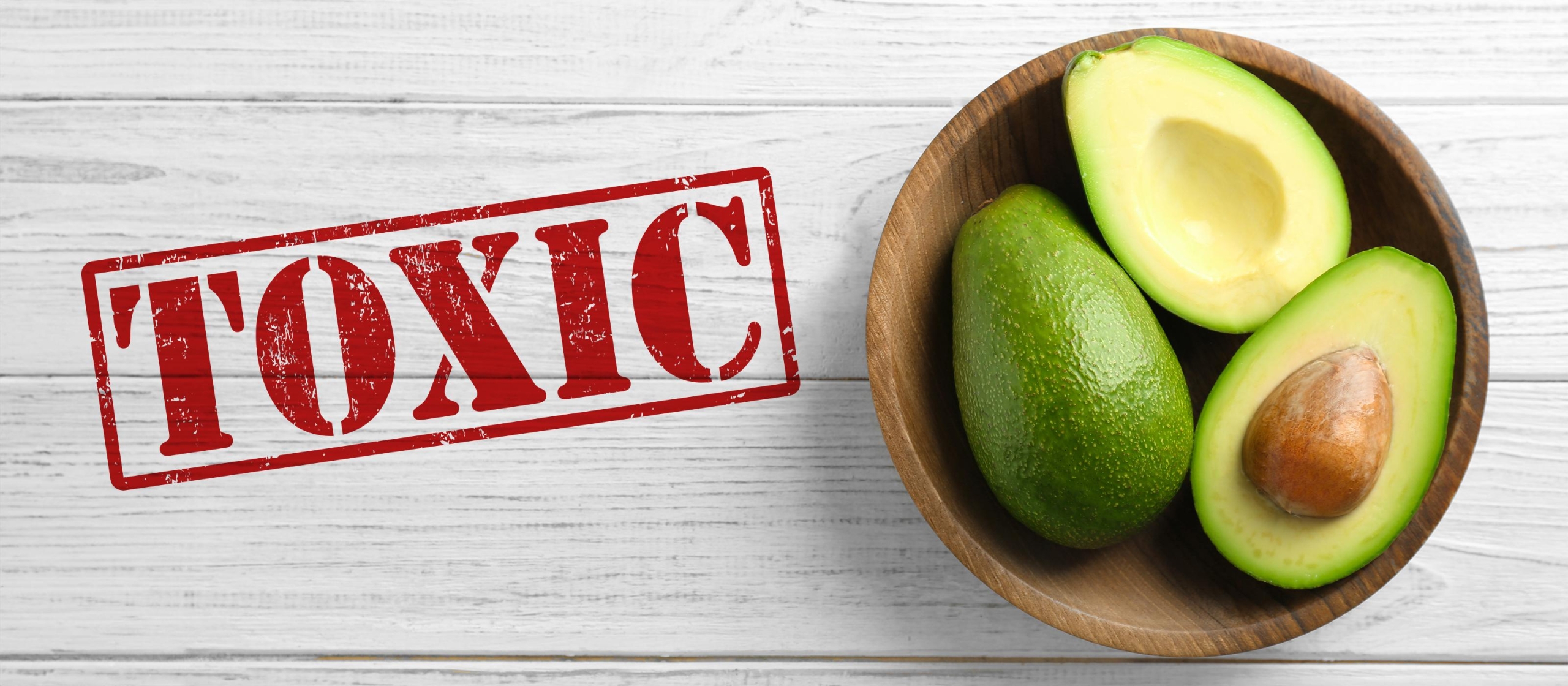Picture this: you’re savoring a snack on the couch when your dog’s pleading eyes meet yours. It’s hard to say no to your furry friend, but sharing that “harmless” treat could lead to a dangerous situation. Many human foods are toxic to dogs, and even small amounts can cause severe health issues.
Knowing what foods to avoid, what to do if your dog ingests something harmful, and how to handle emergencies without immediate professional help is vital for every dog owner. This guide explores the top dangerous foods for dogs, provides practical advice for emergencies, and outlines preventive measures to keep your pup safe.
Why Some Human Foods Are Dangerous for Dogs
Dogs have a different metabolism than humans, making them sensitive to certain foods and chemicals. While some foods may cause mild stomach upset, others can lead to life-threatening conditions such as kidney failure, neurological damage, or severe toxicity. The effects depend on the type of food, the amount consumed, and your dog’s size and overall health.

Top Foods to Avoid Feeding Your Dog
1. Grapes and Raisins
Even small amounts of grapes or raisins can cause acute kidney failure in dogs. Common symptoms include vomiting, lethargy, loss of appetite, and decreased urination. If you suspect your dog has eaten these, seek veterinary care immediately.
2. Chocolate
Chocolate contains theobromine and caffeine, both of which are toxic to dogs. Dark chocolate and baking chocolate pose the highest risk due to their higher theobromine levels. Symptoms of chocolate poisoning include vomiting, rapid heart rate, tremors, and seizures.
3. Onions, Garlic, and Other Alliums
Onions, garlic, leeks, and chives belong to the allium family and can damage your dog’s red blood cells, leading to anemia. Symptoms may include weakness, pale gums, rapid breathing, and, in severe cases, collapse.
4. Xylitol (Artificial Sweetener)
Found in sugar-free gum, candies, and baked goods, xylitol causes a sudden release of insulin in dogs, leading to hypoglycemia (low blood sugar). It can also cause liver failure. Signs include vomiting, disorientation, seizures, and loss of coordination.
5. Macadamia Nuts
Macadamia nuts can cause lethargy, vomiting, tremors, and fever in dogs. While the exact toxin is unknown, even small amounts can lead to significant health problems.
6. Avocado
Avocados contain persin, a substance that can cause vomiting and diarrhea in dogs. Additionally, the pit poses a choking hazard and can cause intestinal blockages.
7. Alcohol
Alcohol, whether in beverages or food, is highly toxic to dogs. Even small amounts can cause vomiting, coordination issues, breathing difficulties, and, in severe cases, coma or death.
8. Caffeine
Caffeine, found in coffee, tea, and energy drinks, acts as a stimulant that can cause hyperactivity, rapid heart rate, tremors, and seizures in dogs.
Signs to Watch Out For: How to Tell Something Is Wrong with Your Dog
Dogs can’t tell us when they feel unwell, so it’s up to us to recognize when something might be wrong. Spotting early signs of distress or illness can make a significant difference in your dog’s health and recovery. Here are some key symptoms to watch for that may indicate your dog is in trouble, especially if they’ve ingested something harmful:
1. Vomiting and Diarrhea
Frequent vomiting or diarrhea—especially if it contains blood or has an unusual odor—can signal poisoning or a serious health issue. Occasional vomiting may be harmless, but repeated episodes warrant immediate attention.
2. Excessive Drooling or Foaming at the Mouth
Unusual drooling or frothing can indicate your dog has ingested something toxic, particularly irritants like cleaning chemicals or plants.
3. Changes in Appetite or Thirst
- Loss of Appetite: Refusing to eat for more than a day could signal a deeper issue, especially if combined with other symptoms.
- Increased Thirst: Drinking excessive amounts of water may indicate poisoning, kidney issues, or another underlying problem.
4. Lethargy or Weakness
If your dog seems unusually tired, sluggish, or reluctant to move, it could mean they are experiencing discomfort or their body is fighting a toxin. Sudden weakness is a red flag.
5. Changes in Behavior
Watch for signs of anxiety, restlessness, or aggression. Dogs experiencing pain or discomfort might also isolate themselves, whine, or act out of character.
6. Rapid or Irregular Breathing
Labored breathing, wheezing, or rapid panting can indicate serious conditions, including allergic reactions, heart problems, or toxin exposure.
7. Pale or Discolored Gums
Healthy dog gums should be pink. Pale, white, blue, or bright red gums can indicate anemia, lack of oxygen, or poisoning.
8. Seizures or Tremors
Twitching, shaking, or seizures are often associated with severe poisoning or neurological problems. These symptoms require immediate veterinary care.
9. Unusual Urination
- Difficulty Urinating: Straining or whining while trying to urinate could signal a blockage or kidney issues.
- Decreased Urination: A lack of urination may indicate dehydration or kidney failure, which can occur after ingesting harmful substances like grapes or raisins.
10. Swollen Abdomen or Excessive Gas
A bloated or swollen abdomen could indicate gastrointestinal distress, which can be a symptom of poisoning or other serious conditions like bloat (gastric torsion).
What to Do If Your Dog Eats Something Dangerous
Step 1: Stay Calm and Gather Information
- Identify what your dog ate, how much, and when it happened.
- Remove any remaining substance to prevent further ingestion.
Step 2: Contact a Professional
Call your veterinarian immediately or reach out to a pet poison hotline, such as the Pet Poison Helpline at 1-855-764-7661. Provide them with all relevant details.
Step 3: Avoid Home Remedies
Do not attempt to induce vomiting or give your dog medications without professional advice. Certain substances, such as caustic chemicals, can cause more harm if vomited.

What to Do If Professional Help Isn’t Available
Sometimes, access to a veterinarian isn’t immediate. Here’s what you can do to stabilize your dog until professional help becomes available:
1. Induce Vomiting (If Safe)
Inducing vomiting can help remove toxins from your dog’s stomach but should only be done if:
- The substance is not caustic or sharp.
- Your dog is conscious, alert, and able to swallow.
- The ingestion occurred within the past two hours.
How to Induce Vomiting:
- Use 3% hydrogen peroxide at a dosage of 1 teaspoon per 5 pounds of body weight (maximum 3 tablespoons for larger dogs).
- Administer the hydrogen peroxide with a syringe or dropper, ensuring your dog swallows it.
- Encourage movement to stimulate vomiting.
If vomiting doesn’t occur within 15 minutes, do not repeat the dose.
2. Use Activated Charcoal (If Available)
Activated charcoal can help bind toxins and prevent their absorption. Follow the dosage instructions on the product packaging carefully.
3. Hydrate Your Dog
Dehydration can worsen the effects of poisoning. Offer small amounts of water or ice cubes for your dog to lick. Avoid forcing large quantities of water.
4. Keep Your Dog Calm and Restrict Movement
Create a quiet, comfortable space for your dog to rest. Reducing stress and activity levels can slow toxin absorption.
5. Monitor Symptoms Closely
Keep an eye out for worsening signs such as seizures, difficulty breathing, or extreme lethargy. Document any changes in behavior to share with a veterinarian later.
Preventing Accidental Poisoning
Store Food Safely
- Keep dangerous foods out of reach, such as in locked cabinets or high shelves.
- Use dog-proof trash cans to prevent scavenging.
Educate Family and Guests
- Make sure everyone in your home knows which foods are harmful to dogs.
- Avoid feeding table scraps to avoid accidental exposure.
Train Your Dog
Teach commands like “leave it” to prevent your dog from eating items they shouldn’t.
Supporting Your Dog’s Health with Proper Nutrition
Feeding your dog a balanced diet is essential for their overall health. Avoid sharing human food and opt for high-quality dog food and treats. At Prettiest Puppies, we prioritize the health and safety of our puppies. Learn more about our health guarantee and how we care for our dogs.
Click here for a downloadable PDF guide on toxic & hazardous foods for your dog
30 Dangerous or Toxic Foods for Dogs
1. Avocados
Avocados contain persin, which can cause vomiting and diarrhea in dogs. Large amounts may lead to serious complications, and avocado pits pose a choking and intestinal obstruction risk.
2. Cherries
The stems, leaves, and pits of cherries contain cyanide, a deadly chemical that inhibits oxygen use by tissues. Even the flesh can be a choking hazard, making cherries unsafe for dogs.
3. Grapes and Raisins
Both grapes and raisins are extremely toxic to dogs. Even a small amount can cause sudden kidney failure. Always keep these far out of reach.
4. Tomatoes
While ripe tomatoes are generally safe, the green parts of the plant contain solanine, a substance toxic to dogs. To avoid any risks, it’s best to avoid tomatoes altogether.
5. Mushrooms
Only a fraction of mushroom species are toxic, but those that are can be deadly. Since identifying safe mushrooms is difficult, it’s safer to avoid them entirely.
6. Onions
Onions contain compounds that damage red blood cells, leading to anemia. Avoid onions in all forms, including powders and flakes, as well as related alliums like leeks, garlic, and chives.
7. Garlic
Garlic is the most toxic member of the allium family. It can cause severe damage to red blood cells, leading to rupture and anemia. Keep all foods containing garlic away from your dog.
8. Wild Berries
Many wild berries are toxic to dogs. Since it’s hard to distinguish safe varieties, it’s best to err on the side of caution and avoid all wild berries.
9. Rhubarb
Rhubarb contains soluble oxalate crystals, which can lead to kidney failure in dogs if ingested in large quantities.
10. Sugar-Free Candy and Gum
Products with xylitol, a common sugar substitute, are extremely toxic to dogs. Xylitol can cause low blood sugar, seizures, liver failure, and even death.
11. Certain Peanut Butters and Nut Butters
While many peanut butters are safe, some contain xylitol, making them toxic. Always check labels before offering nut butter to your dog.
12. Flavored Waters
Some flavored waters contain xylitol, making them dangerous for dogs. Stick to plain water for your pup.
13. Ice Cream
Dogs are lactose intolerant and can experience vomiting, diarrhea, and gas from ice cream. Sugar-free varieties may contain xylitol, adding to the risk.
14. Chocolate
Chocolate contains theobromine and caffeine, both of which can lead to deadly heart and central nervous system issues. Dark chocolate is especially dangerous.
15. Pudding Snacks
Many pudding snacks contain xylitol or chocolate, both toxic to dogs. Keep these sweet treats out of reach.
16. Caffeine and Coffee
Caffeine is highly toxic to dogs. Even small amounts can lead to seizures, abnormal heart rhythms, and tremors.
17. Sports and Energy Drinks
These beverages often contain caffeine and xylitol, both of which are harmful to dogs.
18. Tea and Tea Bags
Tea contains caffeine, making it unsafe for dogs. Even used tea bags can pose a toxic risk if ingested.
19. Soda
Sodas often contain caffeine and artificial sweeteners like xylitol, which are toxic to dogs.
20. Baked Goods
Many baked goods include ingredients like chocolate, xylitol, and caffeine, making them unsafe for dogs to consume.
21. Alcohol
Alcohol can depress the central nervous system and lead to symptoms like vomiting, diarrhea, difficulty breathing, and even coma.
22. Macadamia Nuts
Macadamia nuts are highly toxic to dogs. Even small amounts can cause weakness, tremors, and vomiting.
23. Raw or Undercooked Meat
Raw meat may contain bacteria like Salmonella and E. coli, posing a risk of severe illness in dogs.
24. Uncooked Dough with Yeast
Uncooked dough can expand in a dog’s stomach, causing life-threatening bloating or alcohol poisoning from yeast fermentation.
25. Bones
Both raw and cooked bones can cause injuries like broken teeth, blockages, or GI tract damage.
26. Moldy Food
Mold produces aflatoxin, a toxic substance that can lead to liver failure in dogs. Prevent access to garbage or compost piles.
27. Milk
Most dogs are lactose intolerant and can experience diarrhea and stomach upset from consuming milk.
28. Salt
Excessive salt can cause vomiting, diarrhea, and in severe cases, dehydration or seizures.
29. Apricots
The seeds, stems, and leaves of apricots contain cyanide, which can lead to breathing difficulties, shock, or death.
30. Starfruit
Starfruit contains calcium oxalate, which can cause poisoning in dogs. Symptoms include vomiting, bloody urine, and weakness.
Final Thoughts: Keep Your Dog Safe
Your dog relies on you for protection and care. By understanding which foods are dangerous and how to respond in emergencies, you can keep your furry friend safe and healthy.
For more information about our puppies, visit Prettiest Puppies or explore our puppies for sale in Austin, TX. If you have questions, contact us at Prettiest Puppies. Your dog’s safety and happiness are our priority!
FAQs: Handling Food-Related Emergencies for Dogs
1. What should I do first if my dog eats something toxic?
Stay calm, remove access to the substance, and contact a veterinarian or poison hotline immediately.
2. Can I induce vomiting at home?
Only induce vomiting if advised by a veterinarian and the substance ingested is safe to expel. Use 3% hydrogen peroxide and follow dosing guidelines.
3. How soon will symptoms appear after ingestion?
Symptoms may appear within minutes to a few hours, depending on the substance and the amount ingested.
4. Are there any safe human foods for dogs?
Yes, foods like plain cooked chicken, carrots, and apples (without seeds) can be safe in moderation. Always research first.
5. What should I do if I can’t reach my vet?
Follow emergency steps like inducing vomiting if safe, administering activated charcoal, and monitoring symptoms. Seek help as soon as possible.


